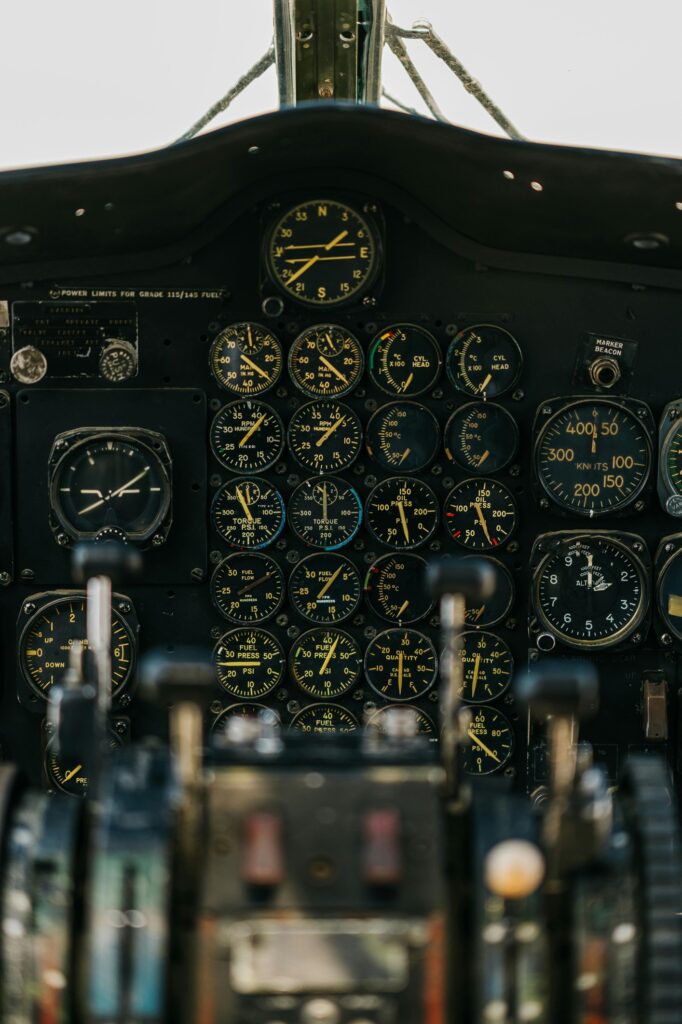
Aircraft autopilot systems are designed to control the aircraft’s trajectory without constant input from the pilot. Modern aircraft use advanced autopilot systems that combine multiple levels of automation. These systems are often categorized into different modes, such as lateral and vertical navigation, as well as more complex functions like auto-landing. Below are some of the key autopilot software and systems used in commercial, private, and military aircraft:
1. Collins Aerospace Pro Line Fusion
- Type: Commercial and business jets.
- Description: This is an integrated avionics system used in business jets and regional airlines. It offers advanced automation, synthetic vision, and a high degree of situational awareness for pilots.
- Features:
- Autopilot coupled with synthetic vision for low-visibility operations.
- Integrated flight management system (FMS).
- Terrain and weather avoidance capabilities.
2. Honeywell Primus Epic
- Type: Commercial, business, and military aircraft.
- Description: A highly integrated avionics system used in commercial airliners and business jets. The system supports advanced autopilot features and enables auto-landing in certain models.
- Features:
- Auto-throttle management.
- Vertical and lateral navigation coupled with autopilot.
- Synthetic vision and situational awareness.
- Airport navigation with runway safety alerts.
3. Boeing Autopilot System (AFDS)
- Type: Commercial airliners (Boeing 737, 747, 777, etc.).
- Description: The autopilot and flight director system (AFDS) in Boeing aircraft is integrated with the flight management computer (FMC) to automate many aspects of flight.
- Features:
- Automatic takeoff and landing capabilities (on some models).
- Control of all flight phases (climb, cruise, descent).
- Integration with FMC for precise route tracking.
4. Airbus Auto Flight System (A/THR, AP, FD)
- Type: Commercial airliners (A320, A330, A350, etc.).
- Description: Airbus’ fly-by-wire technology integrates the autopilot (AP), flight director (FD), and auto-throttle (A/THR) systems into a cohesive framework.
- Features:
- Automatic control of speed, altitude, and course.
- Auto-thrust system that adjusts engine power based on desired speed.
- Automated landing system, including CAT III auto-land.
5. Garmin GFC 700 Autopilot
- Type: General aviation (light aircraft, private jets).
- Description: This autopilot is often found in smaller aircraft, such as the Cessna 172 or Piper series, integrated with Garmin G1000 or G3000 avionics.
- Features:
- Automatic pitch and roll control.
- Vertical navigation (VNAV) for altitude management.
- Coupling with GPS navigation and flight plans.
6. Rockwell Collins Flight Control System
- Type: Commercial, military, and private jets.
- Description: Rockwell Collins provides advanced flight control systems that automate various flight operations in business jets and military aircraft.
- Features:
- Precision autopilot for all phases of flight.
- Advanced flight management system integration.
- Synthetic vision and heads-up display integration.
7. L3 Harris Autopilot Systems
- Type: Commercial, military, and unmanned aircraft.
- Description: L3 Harris provides flight control systems with autopilot capabilities for both manned and unmanned aircraft.
- Features:
- Mission-based autopilot control.
- Precision approach and landing.
- Terrain avoidance and weather integration.
8. Dassault Falcon Digital Flight Control System (DFCS)
- Type: Business jets.
- Description: Used in Dassault Falcon business jets, this digital flight control system integrates the autopilot with advanced avionics.
- Features:
- Full auto-pilot mode for complex flight phases.
- Auto-landing and synthetic vision.
- Enhanced flight envelope protection.
9. SAAB Autopilot System
- Type: Military aircraft (Gripen fighter jets, surveillance aircraft).
- Description: SAAB offers advanced autopilot and flight control systems in its military platforms, including high-level automation for mission execution.
- Features:
- Automated target tracking and mission profiles.
- Auto-navigation and threat avoidance.
10. Thales Autopilot System
- Type: Commercial and military aircraft.
- Description: Thales provides advanced avionics systems for civil and military aviation, integrating autopilot with flight management and control systems.
- Features:
- Fully automated takeoff, cruise, and landing systems.
- Integration with head-up display and enhanced vision systems.
- Autothrottle and flight envelope protection.
Common Features of Modern Autopilot Systems
- Three Axis Control: Autopilots usually control three axes of movement: roll (banking), pitch (up and down), and yaw (turning left or right).
- Flight Management System (FMS) Integration: Modern autopilots are tightly integrated with the flight management computer to automate navigation, altitude control, and engine settings.
- Autoland: Many commercial autopilots include auto-landing capabilities, especially for low-visibility conditions (CAT III approaches).
- Flight Envelope Protection: Prevents pilots from overstressing the aircraft by limiting the range of inputs.
- Coupling with GPS and NAV Systems: Autopilot systems are often linked to GPS and navigation aids (like VOR, ILS) for precise navigation.
Military-Specific Autopilot Systems
In military aircraft, autopilot systems can be significantly more advanced, designed to assist in combat scenarios, autonomous missions, and complex maneuvers such as air-to-air refuelling. Some systems even feature “auto-recovery” functions that can bring the aircraft back to safe flight conditions if pilots lose control.
Autopilot technology is continuously advancing, with growing emphasis on fully autonomous flight, including in commercial aviation. To explore the opportunities still available for pilots, read more here.
Opportunities for Pilots Despite Autopilot Development
Even with the ongoing advancements in autopilot technology, there are still numerous opportunities for pilots in the aviation industry. These opportunities reflect both the critical human roles in aviation and the evolving nature of the profession
JobsReach Aviation’s Contribution to Hiring Pilots

JobsReach Aviation is transforming the pilot recruitment process by leveraging cutting-edge technology, automation, and social media strategies to connect the right talent with aviation opportunities.
JobsReach Aviation is revolutionizing the aviation recruitment process by embracing AI, social media recruiting, and automation. By eliminating manual processes, improving recruitment turnover rates, and adapting to industry changes, JobsReach is playing a critical role in helping airlines quickly and efficiently fill pilot positions, while providing pilots with seamless access to global opportunities.
Leave a Reply